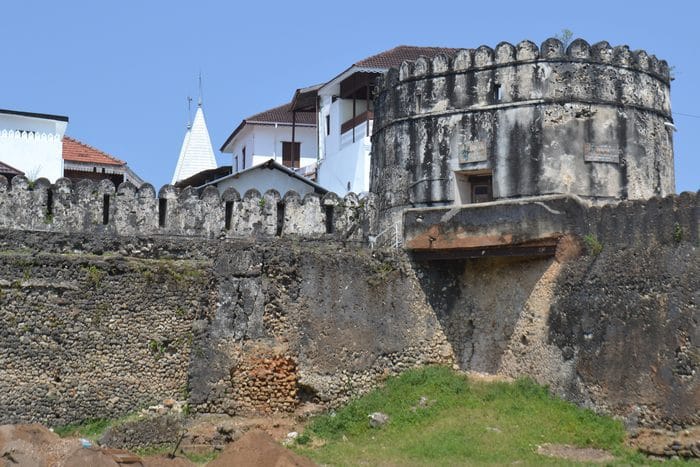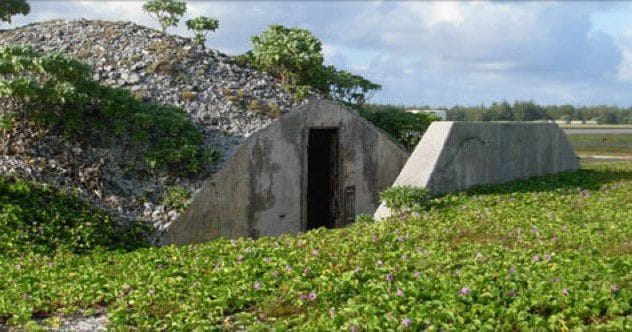There’s something uniquely captivating about places once bustling with activity, now left silent and empty. Abandoned forts, bases, and bunkers, remnants of human conflict or ambitious projects, whisper tales of their past to those who dare to explore. These structures hold a certain mystery, drawing in urban explorers and researchers alike. Prepare to delve into a collection of the most intriguing stories surrounding these deserted locations, from an Antarctic station that keeps getting abandoned to bunker mania that nearly bankrupted a nation. Let’s uncover these strange and fascinating histories!
10 From Conflict Lookouts to Bat Hotels
In 1994, a peace treaty between Jordan and Israel led to the desertion of army bunkers along the Jordan River. These structures didn’t stay empty for long. Remarkably, 12 native bat species decided to call these ghost bunkers home. This unexpected turn of events was a win for conservation, as five of these species were endangered or critically threatened. The bunkers provided a much-needed safe haven.
Free from human interference and situated within a 60-mile (96-kilometer) closed military zone, the bat populations flourished. Now numbering in the thousands, these bats play a crucial role in the ecosystem by consuming insects, thereby reducing the need for pesticides in nearby agricultural areas. It’s a fantastic outcome for the environment, though perhaps not a top tourist destination for everyone!
9 A Unique Gallery of Ships

The Old Fort in Zanzibar, no longer an active military site, now serves as a cultural hub. Recently, fascinating carvings of ships were discovered on its walls. Researchers believe these images, likely etched in the late nineteenth century, were the handiwork of bored guards. With plenty of time and a clear view of the harbor, these soldiers doodled the ships they saw docking near the fort.
While it might sound simple, these engravings offer a rare glimpse into the types of vessels participating in the trans-oceanic trade network across the western Indian Ocean during that era. If the soldiers indeed drew what they observed, a diverse array of ships visited the Old Fort. These included the rare East African mtepe (a ship sewn together without nails), European-style frigates, and various dhows. Some carvings also depicted transom sterns, hinting at ships like the kotia, ghanja, and baghla.
8 A Bizarre Ant Colony
In western Poland, a dismantled Soviet nuclear base features two underground bunkers. These bunkers became overwintering spots for bats, attracting researchers. During a study in 2013, a large colony of wood ants was discovered trapped inside one of the bunkers. Their situation seemed dire: no queen, no obvious food source, no light, no heat, and no escape.
Yet, year after year, their numbers didn’t decrease. The mystery was solved when scientists examined clusters of dead ants and found that nearly 90% had been nibbled on by their nestmates. The colony also had a nest directly above the bunker, and ants occasionally fell through a ventilation pipe, replenishing their numbers. They survived through cannibalism. Eventually, researchers installed a small wooden ramp, and almost all the ants quickly used it to abandon their bunker prison and return to the main nest.
7 The Location of Sapling Fort
In the early 1800s, the Tlingit people valiantly resisted Russia’s attempts to establish a fur trading post in Alaska. They constructed Shís’gi Noow, or “Sapling Fort,” as their final defensive stand against advancing Russian forces. In 1804, a battle took place at the fort, but after five days, the Tlingit were overcome.
Despite this significant last stand, the exact location of Sapling Fort faded from memory over time. In 2021, researchers embarked on a mission to find this historic fort using ground-penetrating radar. Their goal was to locate underground ruins whose perimeter matched the known design of Sapling Fort. This project became one of Alaska’s largest radar surveys. After scanning 42 acres (17 hectares), they discovered subsurface signatures that matched the fort’s layout and details described in both Russian and Tlingit historical accounts. After being lost for over a century, Sapling Fort was found in Sitka National Historical Park, near the mouth of the Kasda Heen river.
6 A Ghost Station in Antarctica
The Halley VI Research Station, located on Antarctica’s Brunt Ice Shelf, has been collecting vital Earth and space weather data since the 1950s. For many years, scientists enjoyed its well-equipped living quarters, designed for year-round comfort. However, a few years ago, the ice shelf began to crack, prompting researchers to abandon Halley VI for safety reasons.
What makes this research station particularly fascinating is its recurring abandonment. Each winter, when living on the unstable ice shelf becomes too dangerous, the scientists depart. To avoid losing valuable data during these periods, Halley VI was ingeniously rigged to operate autonomously. Now, during the long months when it’s essentially a ghost base, the station continues to gather important weather and climate measurements entirely on its own, without any human presence.
5 Thousands of Concrete Mushrooms
It’s difficult to believe that constructing bunkers could nearly ruin a country, but that’s precisely what happened in Albania. From 1941 to 1985, dictator Enver Hoxha, consumed by paranoia, believed Yugoslavia, Greece, and even his Soviet allies were plotting to invade. Despite the unlikelihood of such an invasion, Hoxha ordered the construction of approximately 750,000 bunkers across the nation. This massive undertaking virtually enslaved the population and drained Albania’s financial resources.
Most of these concrete fortresses were dome-shaped and stout, earning them the nickname “mushrooms.” Today, hundreds of thousands of these bunkers still dot the Albanian landscape, ranging from large underground shelters to small, two-person igloos. Albanians have found practical new uses for these relics, converting them into animal sheds, shops, changing rooms, art galleries, and even discreet meeting spots for couples.
4 Remains of a Fake Airfield
During World War II, battles weren’t always won with just firepower; sometimes, clever deception was key. In late 1942, the U.S. military decided to create a fake airport in Virginia. The goal was to make enemy pilots believe there was a strong military presence in the area. Additionally, the base served as a decoy during air raids to protect the nearby city of Richmond. At night, while Richmond went dark, the dummy airfield would light up, drawing German planes away from the city and the actual airfield.
The 936th Camouflage Battalion skillfully constructed fake hangars, vehicles, aircraft, and taxiways. After the war, the site was used for bombing practice. Later, an attempt to convert it into a psychiatric facility failed. Today, if you look from above, some ruins of this abandoned decoy airport, including a water tower and roads leading nowhere, are still visible through the trees.
3 A Secret Japanese Camp
In 2004, archaeologist Robert Muckle received a tip about an intriguing site in British Columbia’s North Shore mountains. He initially expected to find a historic logging camp. However, upon investigation, he uncovered something far more surprising: the remnants of a thriving Japanese village hidden deep in the Canadian forest.
This remarkable discovery included 14 houses, a water reservoir, a bathhouse, a garden, and a shrine. Muckle theorizes that the site began as a logging camp but evolved into a secret village as more Japanese individuals sought refuge from the prevalent racism of the era. This discrimination intensified during World War II, especially after Japan’s attacks on Pearl Harbor and Hong Kong, where many Canadian soldiers were lost. The village appears to have been abruptly abandoned. Muckle’s sad hypothesis is that the secret village was discovered, and its inhabitants were forcibly relocated under the wartime policy that affected up to 90% of Japanese Canadians, separating families and sending them to various internment camps.
2 The Monster Nazi Bunker
During World War II, the German military occupied Bordeaux, France, and established a submarine fleet there. These U-boats needed a secure place for repairs, leading to the construction of an enormous bunker designed to withstand even the most severe aerial attacks. The colossal domed structure covered over 130,000 square feet (more than 12,000 square meters) and used an amount of reinforced concrete that could fill 240 Olympic swimming pools today.
The submarine base was abandoned just two years after its completion. This wasn’t due to any failure in its design; the bunker successfully withstood several air raids with minimal damage. However, when German forces withdrew from Bordeaux in 1944, they couldn’t exactly take the massive building with them. For decades, the base remained empty. Then, creative visionaries saw its potential and transformed the cavernous interior into the world’s largest digital art gallery. Today, visitors can wander through different sections of the bunker, enjoying floor-to-ceiling art digitally projected onto its imposing walls.
1 The Anderson Fallout Shelter
Back in 1991, Tim Howey, a resident of Fort Wayne, Indiana, was quite fed up. His home had a peculiar feature that constantly attracted strangers to his yard: an old bunker. This fallout shelter was purchased by the home’s previous owners, the Andersons, in 1955 for $1,800. It claimed to offer protection against nuclear fallout during the Cold War, a time when nuclear threats loomed large. The Andersons had the shelter installed 15 feet (4.5 meters) deep in their front lawn.
By the time Tim Howey owned the property, the steel structure had gradually risen closer to the surface, becoming a public curiosity. When the unwanted attention became too much, Howey offered the artifact to the National Museum of American History. The museum eagerly accepted the chance to acquire it. They carefully exhumed the bunker and added it to their collection. Now, museum visitors can peer into the cramped quarters, which included a chemical toilet, four beds, and a hand-cranked pump designed to bring fresh air into the shelter.
These abandoned places, each with its unique story, offer us a window into different times and circumstances. From wartime ingenuity to the unintended consequences of paranoia, they remind us of the ever-changing human landscape and nature’s ability to reclaim what’s left behind. They stand as silent monuments to history, fear, and sometimes, unexpected new beginnings.
What’s the most fascinating abandoned place you’ve ever heard of or visited? Share your stories in the comments below!










